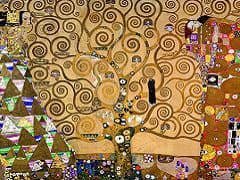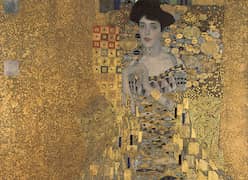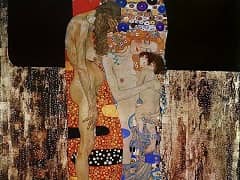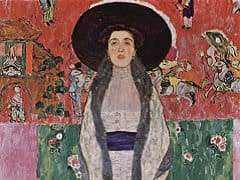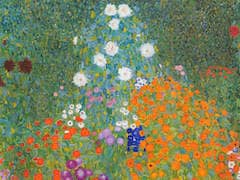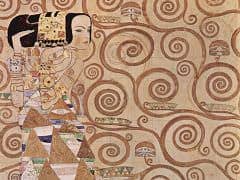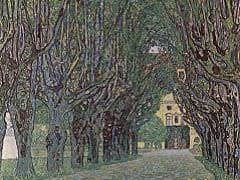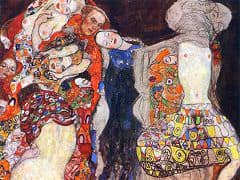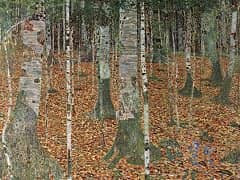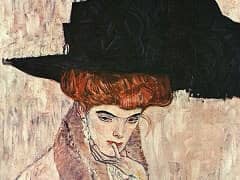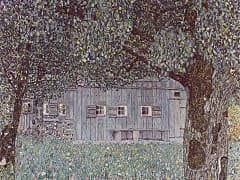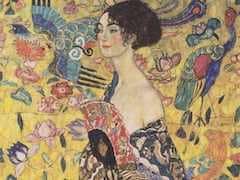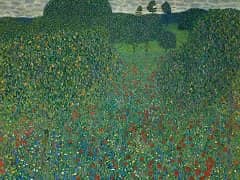Litzlbergkeller on Lake Atter, 1916 by Gustav Klimt
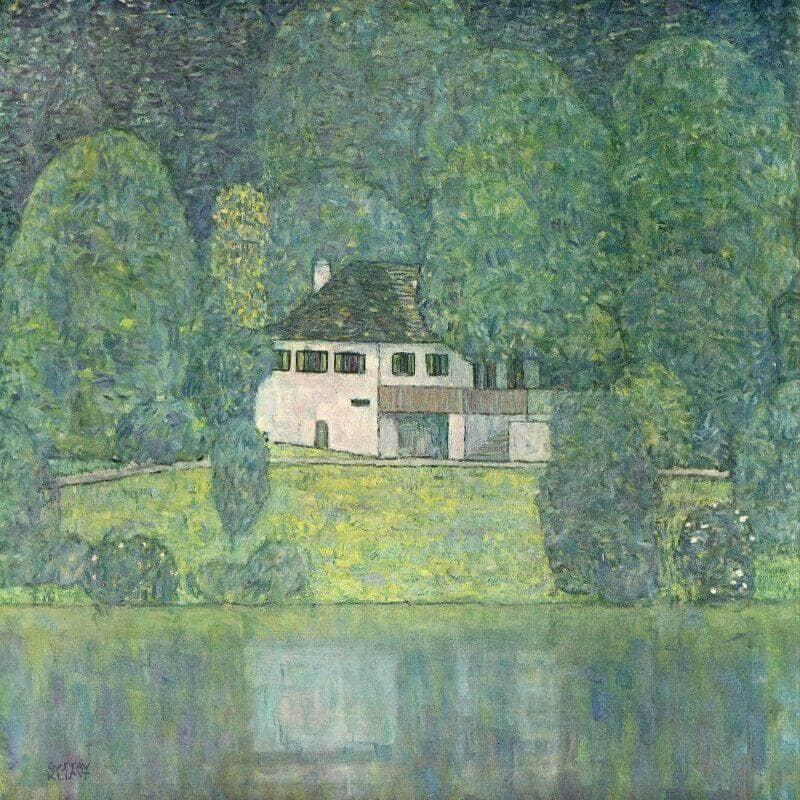
Like the Impressionist Claude Monet, Klimt painted from a boat, returning to his studio to finish the work. This obviously accounts for the viewpoint of this
painting, with its reflections in the water in the foreground. At Lake Atter, where the peace and quiet enabled Klimt to paint most of his landscapes, he was the first owner of a motorboat. He also acted
as referee in a regatta.
Klimt has made use of the same few colours across the whole surface of the canvas. Thus, in the windows of the house we find the yellows, greens and blue-mauves of the lawn; in the flowers on the
lakeside bushes we find the white of the building. This echo of colour helps to soften the transition between the organic forest and the man-made building, while the uniformly treated reflections in the
water further unite the different elements of the scene. This is quite unlike Schloss Kamtner at Lake Atter, where the different painting techniques
sharply distinguish between lake, vegetation and building.


